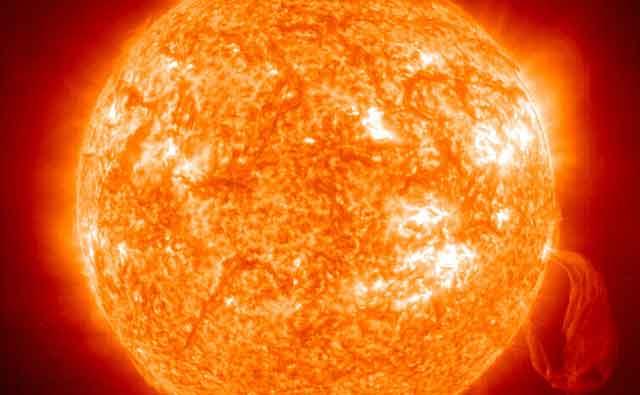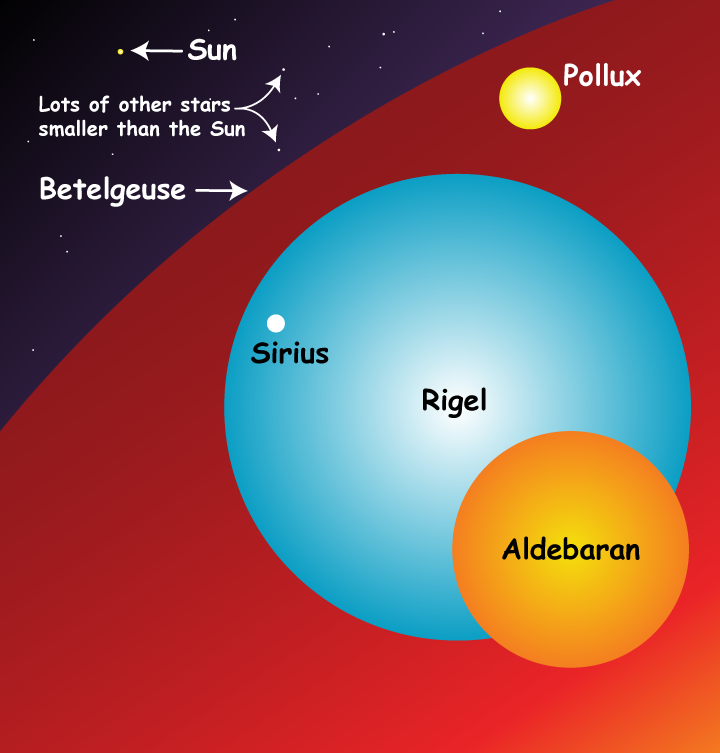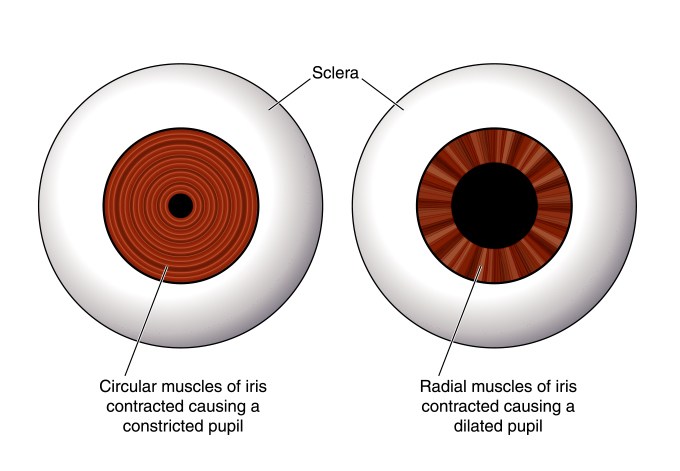THE SOUTHWORTH PLANETARIUM
70 Falmouth Street Portland, Maine 04103
(207) 780-4249 usm.maine.edu/planet
43.6667° N 70.2667° W
Altitude: 10 feet below sea level
Founded January 1970
2021-2022: CXV
"Keep your face to the sun and you will never see the shadows."
-Helen Keller
THE DAILY ASTRONOMER
Friday, April 29, 2022
Quiz # 27: Here Comes the Sun...We Hope
Yes, indeed, spring is here.
In fact, we're now nearly six weeks beyond the vernal equinox along the time continuum. Of course, being hinterland denizens, we've not yet experienced an excessive amount of spring-like weather. However, now that we're a few hours shy of May 1st, the enveloping warmth and soul-rejuvenating temperatures should be just around the corner! In commemoration of the warm season's imminent return, we're posting a quiz about the Sun: that gloriously bright, life-sustaining source of heat, light and merriment.

1. If hollowed out, the Sun could accommodate how many Earth sized spheres?
a. 16,700
b. 113,879
c. 435,978
d. 1.2 million
2. When is the Sun closest to Earth?
a. Earth's orbit is circular so its distance from the Sun remains constant
b. early July
c. early January
d. the autumnal equinox
3. About how much of the Sun's energy does Earth receive?
a. 3%
b. 1.5%
c. one millionth
d. one billionth
4. As far as size is concerned, how does the Sun compare to other stars?
a. it is smaller than most.
b. it is smaller than half of them
c. it is larger than about 90% of the other stars
d. the Sun is larger than any other star
5. How old is the Sun?
a. 6006 years old
b. 3.5 million years old
c. 5 billion years old
d. 10 billion years old
6. True or false: The Sun is yellow.
7. True of false: The Sun will become a black hole in about 6.5 billion years
8. The Sun consists primarily of hydrogen and helium. It contains "trace" amounts of other elements. How many other elements have been detected in the Sun so far?
a. 5
b. 17
c. 34
d. 67
9. How long does the Sun require to complete one orbit around the galaxy?
a. it hasn't completed an orbit yet and probably never will before it dies.
b. 10 million years
c. 113 million years
d. 225 million years
10. The energy created in the Sun at this very moment will need how much time to escape into outer space, approximately?
a. 8.4 minutes
b. 10,000 years
c. 45,000 years
d. 200,000 - 300,000 years
ANSWERS
1. d. 1.2 million
Now, that's a humbling thought. Compared to us, Earth is unfathomably huge! Compared to Earth, the Sun is immense. One could pour Earths into the hollowed out Sun like 200 galloons of Skittles poured into a large vat. (Yes, we did the math....no, we probably didn't do it right...)
2. c. early January
Yes! Despite the frigid and bitter conditions of early January when we're huddled together inside our in home bon-fires while watching globules of liquid oxygen dripping off the branches, we're actually closest to the Sun. Earth reaches perihelion, the point of least distance, around January 1 - 4. At this time, we're 91.5 million miles from the Sun. When at aphelion around July 4th, Earth's heliocentric distance is about 94.5 million miles. The distance difference doesn't affect our weather.
3. d. one billionth
Wow! I mean, wow! Venture out into a steamy hot tropical rainforest and realize that the oppressive heat is almost a negligible fraction of all the heat energy the Sun generates.
4. c. it is larger than about 90% of the other stars
Most of the stars are red dwarfs, which are considerably smaller than the Sun. However, some stars literally dwarf the Sun. Look at the size comparisons between the Sun and some of the larger stars

5. c. 5 billion years old
The Sun is about mid way through its life cycle.
6. False!
Big, bold false! The Sun appears yellow because of our atmosphere. In fact, the Sun would appear white if one approached it in space. The Sun produces light along the entire EM spectrum. It produces the most radiation along the green portion of the spectrum (483-520 nm).
7. False!
Big, bold, bloated false! The Sun will never become a black hole. When it perishes, the Sun will turn into a white dwarf surrounded by a planetary nebula.
Big, bold, bloated false! The Sun will never become a black hole. When it perishes, the Sun will turn into a white dwarf surrounded by a planetary nebula.
8. d. 67
We remember that the solar system formed from a nebula chemically enriched by the introduction of supernova remnants. Such remnants contain an abundance of elements. These particles would have been incorporated into the Sun. The three most abundant elements (by number of atoms) in the Sun are hydrogen, helium and oxygen.
9. d. 225 million years
A galactic year. The Sun has completed more than 20 revolutions around the galactic center through its life.
10. d. 200,000 - 300,000 years
Every time you are outside on a sunny day you are awash in ancient starlight.
To subscribe or unsubscribe from the Daily Astronomer:
Jolly Roger Astronomy
or
Misadventures in Dark Adaptation
or
Stretching a Point So Far it Will Never Regain its Original Shape Even if you Freeze it

Ahoy, ye scurvy dogs! Batten down the hatches! Swab the gangplank! Hoist up the Jolly Rogers, ye swashbuckling knaves, as we plough these white capped seas in search of ill-gotten gold, bountiful booty, and purses aplenty in unprotected ports. Arr! May every skirmish with the King's regiments be another victory for the Devil, himself, dancing in the fire lit caverns where our shades will soon gather to...
Yes, you're right. Unless they're standing close to the fried dough stand or ferris wheel, no pirate will ever actually spout such nonsense. Moreover, according to historians who have studied maritime history, being visited by real pirates would ruin what would probably be the last day of your life, anyway. Also, a pirate captain would have had to have been unfathomably stupid to have a Jolly Roger pirate flag flapping from the mast. Doing so would have been tantamount to spray painting "Hey, British Navy, cannon ball us first!" on the bow. All this tedious history notwithstanding, Jolly Roger flags are now inextricably linked with pirate lore and pirate-based theme park rides. Now, apart from the fact that I just bought a Jolly Roger flag yesterday in order to terrify the staff into unquestioning obedience, what connection could such a flag possibly have with astronomy?
Look at the eye patch!
Have you ever wondered why pirates wore eye patches? Theories abound, of course, as theories are wont to do. Many believe that the eye patches were necessary because pirates would often lose an eye in fencing duels or zombie sieges. In fact, the reason might have been less about empty sockets than contracting pupils: dark adaptation.
Let's say that a pirate is on a ship doing what pirates generally do (and the less said about that, the better.) As a pirate is moving from the lower region to the deck, he (sometimes, she, Grannia), will be exposed to different light levels: dark and gloomy in the lowest level, fiercely bright on the deck, with various levels of gloaming haze in between. Now, as anybody who has spent 340 years working in a subterranean planetarium without the faintest hope of liberation and far removed from the sympathies of humankind can attest, ascending out of deep darkness into open sunlight can inflict some pain on ye here soul windows. The pirates would have experienced the same discomfort and, most importantly, might have been temporarily blinded by the sunlight when ascending onto the upper deck. Conversely, they would also have been blinded by the shade when venturing down below. Having a patch on one eye would keep that eye steeped in darkness and therefore always dark adapted. As the pirate rushes down into the ship's lower regions, he/she could switch the patch from the dark adapted eye to the one that isn't, thereby preventing the temporary loss of vision.

Our pupils expand and contract in response to light levels. In bright light, the pupils contract for self protection to prevent an excess of incoming radiation. In dim light, the pupils expand to allow for the reception of more light to see. When one wants to have a good view in a dim region, the larger the pupil the better. (We remember that telescopes are essentially allowing for the gathering of more light so one can gain a much clearer view of a dim celestial object.)
Tonight, if you're planning to venture outside to admire the sky, you could keep a patch on your eye for about 20 - 30 minutes beforehand. That patch would protect your eye from the micro sources of light pollution: televisions, lamps, computer screens, smart phones, and the various other trappings of our modern world. You might look like a pirate, but you'll be able to see the sky like an astronomer. A perfect time to make a comment about moral equivalency, but we won't.
*